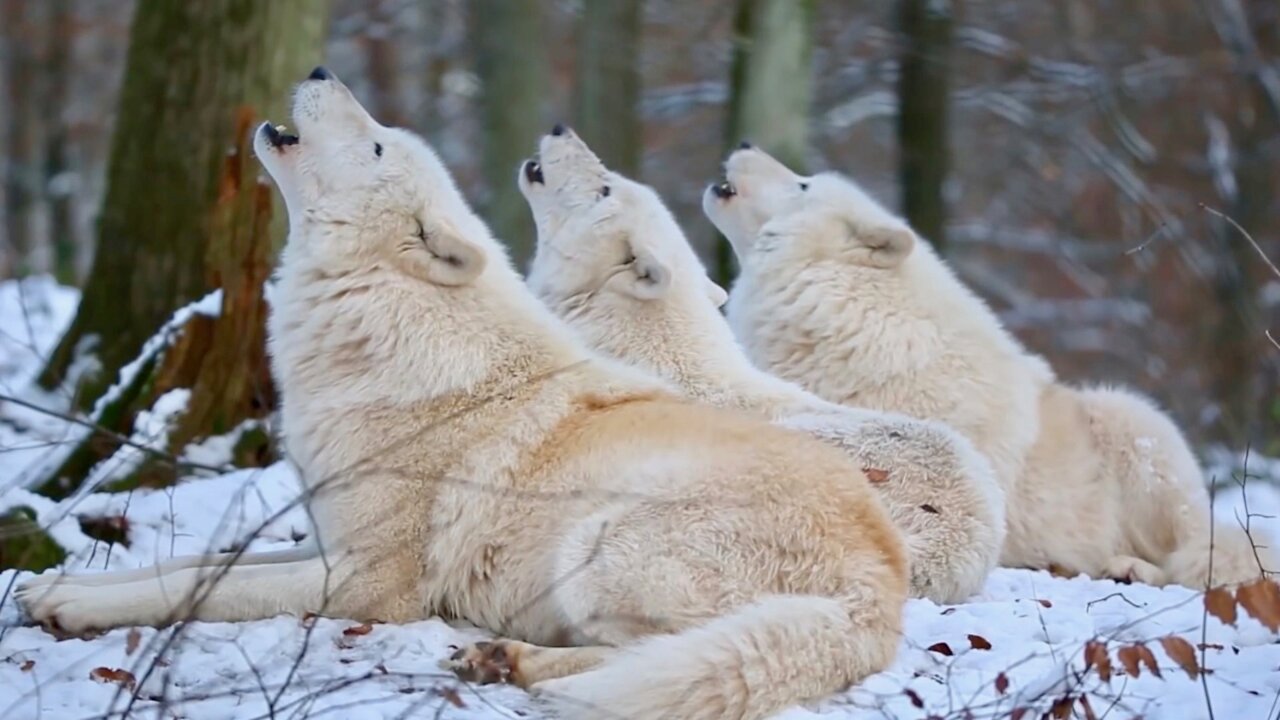Premium Only Content

10 Interesting Facts About Wolves
Wolf Facts- Average life span for wolves in the wild up to 13 years in wild (usually 6 to 8 years) up to 16 years in captivity. Average weight for females is 27 to 36 kilograms (60 to 80 pounds) and for males 30 to 50 kilograms (70 to 110 pounds). Average height is from 66 to 81 centimeters (26 to 32 inches) at the shoulder. They have gray, black or white fur color. Wolves are the largest members of the Canidae family, which includes domestic dogs, coyotes, dingoes, African hunting dogs, many types of foxes, and several kinds of jackals.
There are 2 widely recognized species of wolves in the world, the red and the gray. However, there is debate over how many species of wolf exist and if there are different subspecies of the gray wolf.
Wolves are excellent hunters and have been found to be living in more places in the world than any other mammal except humans.
Wolves are legendary because of their spine-tingling howl, which they use to communicate. A lone wolf howls to attract the attention of his pack, while communal howls may send territorial messages from one pack to another. Some howls are confrontational. Much like barking domestic dogs, wolves may simply begin howling because a nearby wolf has already begun.
10 More Interesting Facts About Wolves
1. Wolves are renowned because of their Spine-tingling howl that can be heard from miles around. Magical yet Frightening.
2. It is rumored that wolves howl at moon which is wrong. In order for howl to be effective & high-pitched, a wolf has to bend the neck upward. They tend to howl more at night because they are nocturnal.
3. Wolf Packs are established according to a highly organized and strict hierarchy. Average Pack size is 6 to 8 Wolves with a dominant leader ‘Alpha Male’ at the Top. He make the decisions and is responsible to all the wolves in the Pack. He’s leads the Hunt and usually eat first.
4. Wolves are highly territorial animals and typically hunt within territories, ranging from 50 to 1,000 square miles. They establish territories far larger than they require to survive
5. Approximately 1/3 of the life of a wolf will be spend moving around their territory and thus known to roam large distances. So much so that they may travel 50 miles or more each day in search of food.
6. The territory is marked out accurately by urine, droppings, scratches and sound calls and is defended actively against trespassing wolves.
7. They hunt as a group which make it possible for them to hunt down animals much larger themselves, such as elk, deer or moose and can eat 20 pounds of meat in a single meal
8. Wolves can smell other animals several kilometers away & from the smell they can tell if other wolves were in the territory. This is because Wolves have about 200 million scent cells as compare to Humans who have only about 5 million.
9.Wolves have several ways to stay warm in cold weather. They have a very heavy double coat of fur which allow them to survive in temperatures as low as minus 40 degrees Celsius.
10. After the last wolf was killed in Yellowstone National Park in 1926, a wolf reintroduction program was implemented in 1995. A couple lived with the wolf pack for 6 years in Idaho to create a documentary and named the pack ‘Sawtooth’ The program is considered to be a great success—the wolves are reproducing at a rapid rate, and there are currently around 100 wolves in the Yellowstone park.
Music: The Wolf and the River by Dhruva Aliman
Amazon- https://amzn.to/2Mgr7pg
https://music.apple.com/us/artist/dhruva-aliman/363563637
https://dhruvaaliman.bandcamp.com/album/the-wolf-and-the-river
http://www.dhruvaaliman.com/
Spotify - https://open.spotify.com/artist/5XiFCr9iBKE6Cupltgnlet
-
 3:33
3:33
Knowledge Land
2 months agoYour Personal Electric Aircraft Is Here - Jetson One
42 -
 LIVE
LIVE
BonginoReport
1 hour agoBig Bad JB Threatens Trump! - Nightly Scroll w/ Hayley Caronia (Ep.120) - 08/26/2025
13,480 watching -
 LIVE
LIVE
Dr Disrespect
7 hours ago🔴LIVE - DR DISRESPECT - GEARS RELOADED GLOBAL LAUNCH - CRUSHING LOCUST
1,882 watching -
 LIVE
LIVE
SpartakusLIVE
4 hours ago$20,000 Hide and Seek Tourney w/ Stonemountain64 || #1 Rat wins the BIG CHEESE
314 watching -
 1:02:26
1:02:26
Kim Iversen
2 hours agoIran Rejects Nuclear ‘Spy’ Inspectors — War Next?
20.2K17 -
 LIVE
LIVE
StoneMountain64
5 hours agoWARZONE LEGEND RETURNS. GHILLIE SUIT $20k TOURNEY.
121 watching -
 DVR
DVR
TheCrucible
2 hours agoThe Extravaganza! EP: 27 with Guest Host: Rob Noerr (8/26/25)
11.4K -
 LIVE
LIVE
GloryJean
8 hours agoHide & Seek Tournament w/ Spartakus, StoneMountain64 & Stevie
40 watching -
 LIVE
LIVE
Reidboyy
4 hours agoNEW FREE FPS OUT ON CONSOLE NOW! (Delta Force = BF6 with Killstreaks)
11 watching -
 1:37:26
1:37:26
Redacted News
2 hours agoHIGH ALERT! DID UKRAINE JUST DECLARE WAR ON HUNGARY? ZELENSKY DEMANDS MORE CASH FROM NATO | REDACTED
115K64